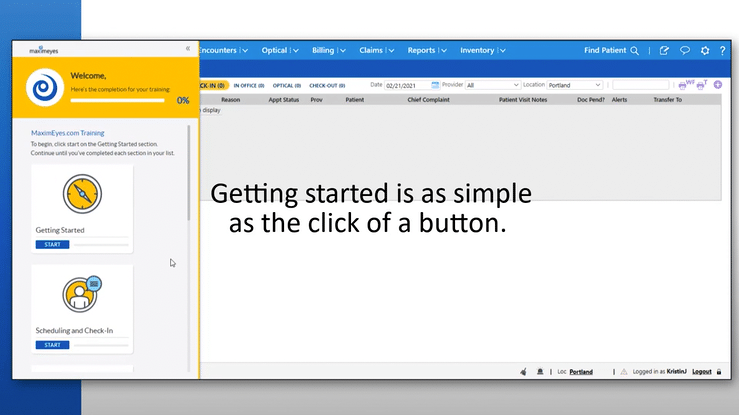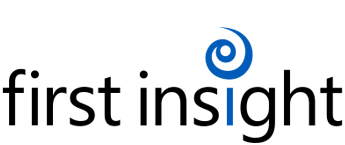
07 Nov A Closer Look at Eye Care Professionals’ Perspectives on Optometry Software
What do eye care professionals (ECPs) think about their optometry software? In October 2023, our survey results revealed interesting insights into ECPs’ view of their EHR and practice management software.
Nearly 90 percent of the 300 survey responses are optometrists, 6 percent are office managers/practice administrators, and the remaining responders work alongside eye care providers. Over 20 different optometry EHR and practice management systems were used by respondents.
Optometry EHR Survey Highlights
First Insight’s survey findings indicate that ECPs highly value practice management and EHR systems that provide features such as customizable clinical documentation, electronic prescription (e-prescribing) management, and efficient billing and claims management. Respondents also emphasized the importance of training and ongoing support for doctors and office staff.
In addition, the survey identified areas where optometry software could improve, even though EHR systems have demonstrated their value in the eye care industry.
Respondents also stressed the need for improved system performance and enhanced customization options. Software stability emerged as another critical concern—frequent software glitches or crashes disrupt the smooth operation of a practice.
Survey Reveals Top 5 Time-Saving Optometry Software Features
1. Customizable Clinical Documentation
Sixty-three percent of respondents expressed the importance of EHR systems to allow them to customize encounter forms, templates, and workflows that align with their specific needs.
Clinical documentation flexibility allows you to efficiently document patient information, create templates that align with your practice’s workflow, and adapt to new treatment methods.
For instance, doctors need the ability to easily tailor their workflow and encounter forms to match a preferred data entry order, examination steps, and follow-up processes. These options focus on fewer clicks and increased patient time.
“Personalizing my workflow with templates puts the focus where it needs to be and speeds up the exam. I no longer have to wade through every element in a regular encounter workflow when doing something simple like an IOP check exam.” –Brad Bodkin, OD (read success story)
2. Fewer Clicks and Faster EHR Navigation
Fifty-three percent of respondents stressed the challenge of their EHR systems with numerous clicks and multiple screens to complete routine tasks. The number of clicks it takes to perform a task is a make-or-break factor for eye care professionals using EHR optometry software.
The struggle to minimize the number of clicks has become a prevailing concern in the eye care profession. Every additional click means more time spent on administrative tasks, diverting attention from patient care.
Fewer clicks in EHR software are essential for saving time and reducing the risk of user errors. As the complexity of eye care increases, so does the chance of inputting incorrect data or making unintentional selections due to excessive clicks. Your EHR software should help you document quickly, allowing you to spend more time diagnosing and communicating with your patients.
“The overview page in MaximEyes.com is clean and concise. It lets us see important information quickly with fewer clicks.” –WyoVision Associates (read success story)
3. Billing and Insurance Claims Management
Fifty-three percent of respondents highly value systems that simplify billing processes and streamline insurance claims management. Such features reduce the administrative burden and help practices run more smoothly.
The remaining 47 percent of survey respondents, while not ranking billing and claims management as their top priority, also acknowledged the significance of these features.
With the right tools, practices navigate the complexities of insurance claims easily, resulting in fewer payment delays, errors, and overall stability. The ongoing development of EHR systems is about enhancing the bottom line and ensuring that eye care professionals focus on what they do best—providing high-quality care to their patients.
“We save so much time with a billing and claims overview dashboard. The one-screen location for posting insurance payments and making any corrections speeds things up even more.” –Chet Myers, OD (read his success story)
4. Electronic Prescription (E-Prescribing) Management
Fifty-three percent of respondents consider electronic prescription management a crucial feature in their optometry EHR software to help drive medication adherence and improve patient health outcomes.
E-prescribing improves the efficiency of prescription management and reduces errors associated with handwritten prescriptions by submitting regulatory-compliant, digitally-signed prescriptions to pharmacies.
For example, built-in electronic prescription management and medication adherence tools within EHR systems gives you quick access to patient medication history data, current formulary information, and dosing, in addition to drug–drug, drug–allergy, and duplicate therapy interaction alerts.
“The two-way e-prescribing feature in MaximEyes.com makes it easy for Dr. Downs and me to send prescriptions to the pharmacy and bring in a list of medications from other doctors. We can create compliant electronic prescriptions with just a few clicks.” –Peter Falk, OD (read success story)
5. Expert Training and Reliable Customer Support

MaximEyes.com’s Built-in Learning Center
More than 25 percent of respondents stressed the significance of training and support. Learning how to use your software while still managing a practice is stressful. But with the proper training and tools, you’ll experience a smooth transition to harness the full potential of your EHR system.
“It took my staff about 30 days to realize MaximEyes.com was better and easier to use than our old software. First Insight focuses on customers’ needs and continually improves the software to make it more user-friendly.” –Rebecca Verna, OD (read success story)
The software you invest in should include reliable customer support (online chat, email and phone support), onboarding training (online and onsite), and interactive built-in training tools to give you quick access whenever you have questions or need advice about a specific process.
For instance, MaximEyes.com’s self-guided built-in learning center makes learning easy with how-to documents, guides, video overviews, tutorials, and tips. Test your knowledge with online courses at your own pace 24/7. Each course helps you and your staff know each module in the system, and a course assessment will test your knowledge.
“The Learning Center within MaximEyes.com gives our staff the freedom to download how-to documents and guides, view product videos, and complete courses without leaving MaximEyes.com.” –Chet Myers, OD (read success story)
Looking Ahead: Energize Your Office with Intuitive Optometry Software
Are you ready to see how MaximEyes.com’s all-in-one optometry EHR, practice management, patient engagement, and optical point-of-sale system will take your practice to the next level?
Book a phone call with a MaximEyes.com representative for a quick chat or request more information. We’ll show you how MaximEyes.com reduces administrative burdens with customizable workflows, efficient billing and claims management, two-way e-prescribing, faster navigation, and fewer clicks. Spend more time on what matters the most—your patients.





